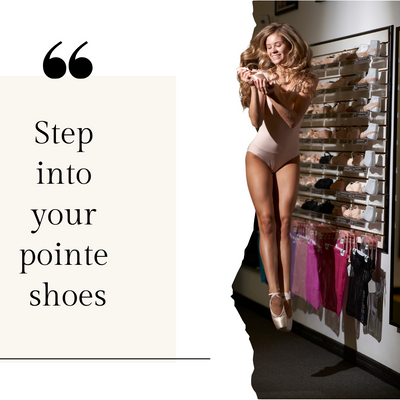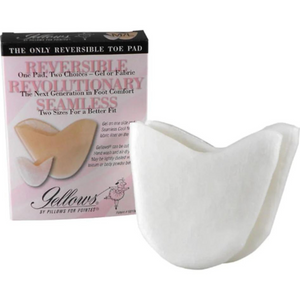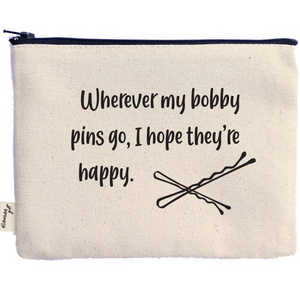Are My Pointe Shoes Dead?
If you're a ballet dancer, you know that pointe shoes are your dance partners. They help you dance gracefully and safely. But, just like any shoes, they wear out. Knowing when it's time to say goodbye to your old pointe shoes is crucial. Dancing in "dead" pointe shoes can be risky and affect your performance. In this blog, we'll look at the signs that tell you it's time to get new pointe shoes and give you tips on how to take care of them. Let's start the journey to keeping your feet happy and dancing beautifully!
What Are Dead Pointe Shoes?
Before discussing when to get a new pair of pointe shoes, let's understand what "dead" pointe shoes are. Dead pointe shoes have lost their supportive and responsive qualities.
Signs and Symptoms

- Loss of Support: Dead pointe shoes can lead to instability during relevés and pointe work. This lack of support may result in foot and ankle pain.
- Reduced Flexibility: When the shank and box of your shoes become stiff and unyielding, you might be dealing with dead pointe shoes. Limited articulation can hinder your performance.
- Visible Wear and Tear: Dead pointe shoes show physical signs of aging, such as broken or frayed ribbons and elastic, holes, and weak spots. Discoloration and sweat stains can also be indicators.
- Sound and Feel: Audible clicking or crunching sounds when dancing and a lack of resilience in the shoe box are surefire signs of dead pointe shoes.
How Long Do Pointe Shoes Last?
Pointe shoe lifespan varies depending on several factors, but on average, a well-maintained pair can last for 12 to 20 hours of dancing. Key factors influencing pointe shoe longevity include:
- Frequency of Use: The more frequently you dance in pointe shoes, the quicker they will wear out.
- Dancer's Skill Level: Beginner dancers might extend the lifespan of their pointe shoes, as they put less strain on the shoes compared to advanced dancers.
- Shoe Type and Brand: Different pointe shoe models and brands offer varying durability and support.
- Proper Care and Maintenance: Adequate care and maintenance practices can significantly impact the lifespan of your pointe shoes.
Tips for Extending the Lifespan of Pointe Shoes
To maximize the life of your pointe shoes and postpone the need for a new pair, consider the following tips:
- Proper Fitting and Sizing: Ensure your pointe shoes fit correctly from the start to reduce premature wear. Dancewear Corner happily offers professional pointe shoe fittings for dancers to find the perfect fit.
- Shoe Rotation: Rotate between multiple pairs of pointe shoes to distribute the wear evenly.
- Care and Maintenance: Clean and dry your shoes after each use and use pointe shoe accessories like toe pads and ribbons.
- Use Jet Glue: Jet Glue is a type of adhesive that can be used to extend the lifespan of pointe shoes by reinforcing and hardening the shank, which is the part of the shoe that supports the arch of the foot. Typically, dancers use Jet Glue to reinforce the shank and the platform of the pointe shoes. The shank is the part that runs along the arch of your foot, and the platform is the flat, hard part at the front of the shoe.
- Use Shellac: Pointe Shoe Shellac is an alternate adhesive and hardener that can be used instead of glue. Applying shellac to the inside of the shank, platform, or wherever you need extra support can not only provide more sturdiness and confidence to the dancer, but also increase the lifespan of the shoe. Shellac can be reapplied many times to provide more life to dead shoes when they begin to lose their hardiness.
- Strengthening Exercises: Strengthen your foot and ankle muscles to minimize the strain on your pointe shoes.
- Regular Inspection: Periodically inspect your pointe shoes for signs of wear and tear.
When to Replace Your Pointe Shoes

Knowing when to replace your pointe shoes is crucial to maintaining your dance performance:
- Listen to Your Body: If you experience discomfort, pain, or reduced performance, it might be time for new pointe shoes.
- Milestones for Replacement: Some dancers choose to replace their pointe shoes after a certain number of classes or performances. Others base it on their personal comfort and needs.
What to Do With Dead Pointe Shoes
Renowned New York City Ballet dancer Tiler Peck has developed a unique approach to managing her pointe shoes. Tiler opts to use her dead pointe shoes during rehearsals instead of newer shoes. This choice allows her to conserve the life of her new, pristine pointe shoes, reserving them exclusively for live performances. By using older pointe shoes for rehearsals, Tiler ensures that her performance shoes remain in optimal condition, providing the necessary support and flexibility for her on-stage performances. This strategy not only prolongs the lifespan of her new pointe shoes but also helps her to maintain peak performance during the most critical moments in her ballet career.
Note: Only use dead pointe shoes for rehearsals if they are still safe to be worn! If they feel too unstable or flimsy, it is better not to risk anything.
Conclusion
Recognizing when your pointe shoes are dead is essential for dancers. Getting a new pair of pointe shoes when needed ensures that you can continue to dance comfortably and safely. By staying attentive to the signs of wear and following proper care and maintenance practices, you can extend the life of your pointe shoes and enjoy your art to the fullest. So, embrace the joy of a new pair of pointe shoes and dance on with confidence.







